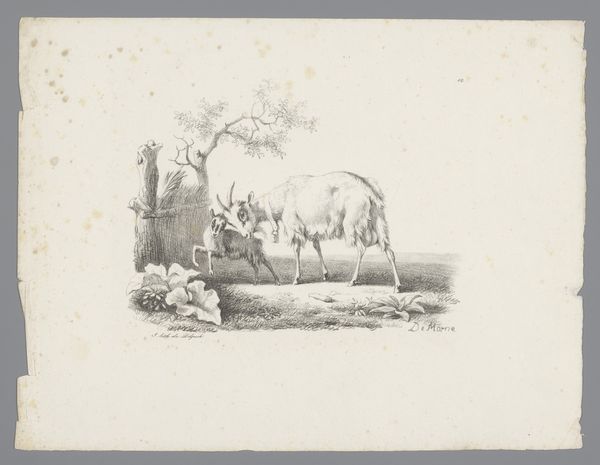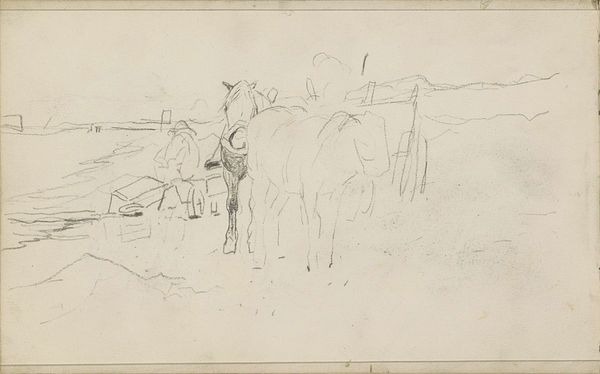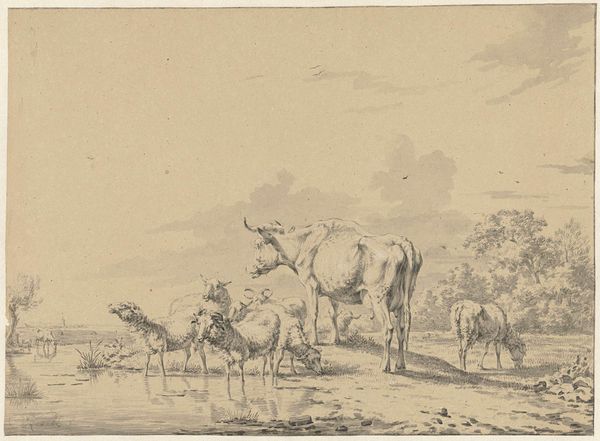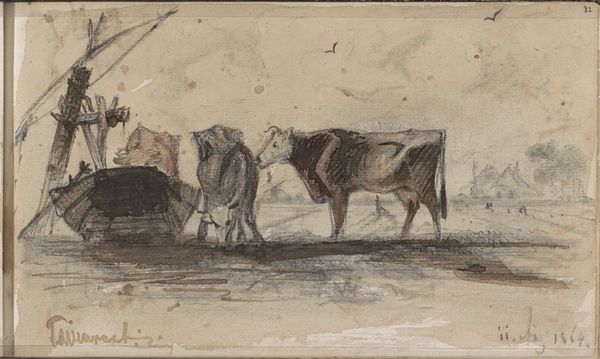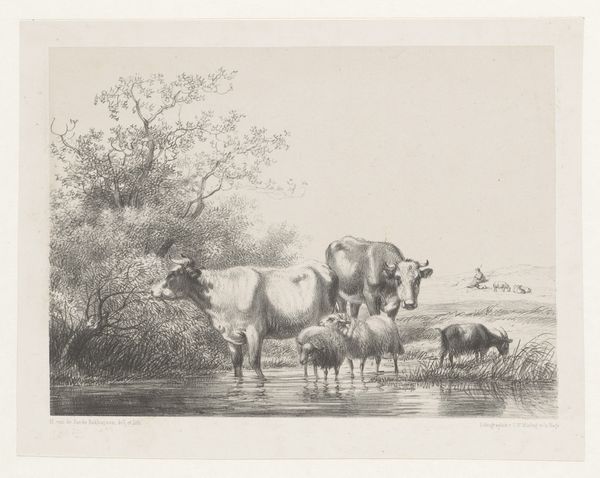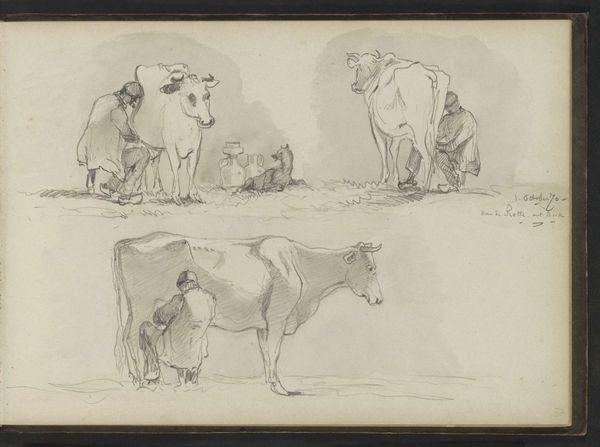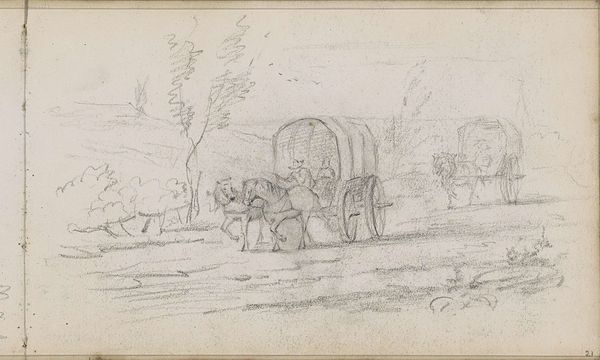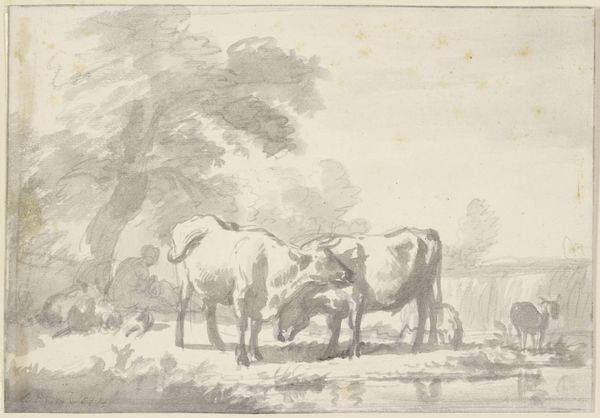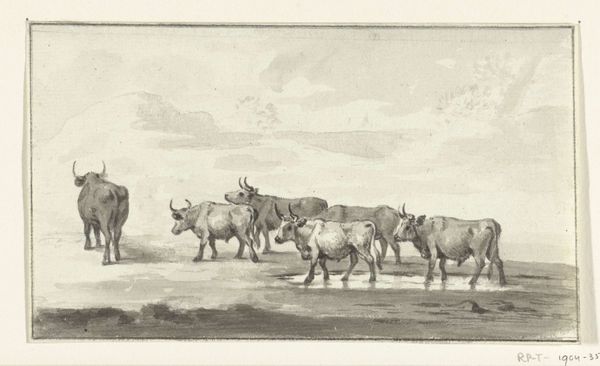
drawing, plein-air, pencil, graphite
#
drawing
#
animal
#
plein-air
#
pencil sketch
#
landscape
#
pencil
#
graphite
#
realism
Copyright: Rijks Museum: Open Domain
Curator: Johannes Tavenraat’s 1870 pencil drawing, "Koeien in Hillegersberg," currently held in the Rijksmuseum, depicts cows in a landscape. What's your immediate impression? Editor: A bucolic quietude. The subtle gradations of graphite create a serene, almost timeless scene of rural life. There’s a strong emphasis on line and form. Curator: I see these cows as representing not just agricultural life but also deeper ideas of nature and nation. Cows are consistently associated with caretaking, calm power, sustenance. These may also carry more national symbolism tied to Dutch identity in the late 19th century. Editor: Interesting. I am particularly struck by the composition – the division into two registers, almost like comparative studies of form. Tavenraat seems less interested in narrative and more interested in exploring the geometry inherent in these animal forms. Look at the varying degrees of completion; some are rendered with confident lines, others merely suggested. Curator: It's true, he masterfully uses pencil to convey form and texture, inviting a slower pace and observation. Editor: Absolutely. The landscape, indicated with the subtlest of shading, frames these organic shapes and guides the eye. One notices the rhythmic repetition and variation within each grouping of the cows, highlighting their structural integrity. The blank parts create a perfect sense of negative space. Curator: Yes, the openness emphasizes that rural idyll. A landscape style of the time period often reflected core societal values. It certainly captures a romantic sensibility toward agrarian life, and a connection with national land as an abundant source. Editor: And that’s why this pencil sketch, seemingly simple at first glance, resonates so deeply. Curator: Indeed. A subtle drawing holds layers of symbolism. Editor: It reminds us of how deeply structure and signs shape perception, which is why art history remains fascinating.
Comments
No comments
Be the first to comment and join the conversation on the ultimate creative platform.

